I was visiting a friend and in their neighborhood all of the curbs were cut for driveways (they were not poured for the cutouts). 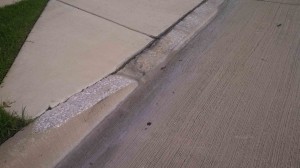
This might have saved some time for the carpenters forming & pouring the concrete. But it created additional work for the concrete cutters and the finishing of the driveways.
This lack of pre-planning created:
- additional time to cut the curb,
- dust (and silica, for sure),
- the use of additional water (hopefully) to control the dust,
- respirators (& cartridge filters),
- exposure to noise, dust, silica
I don’t know the circumstances why this occurred, but I wonder if the person planning the development thought of the exposures to other human beings?
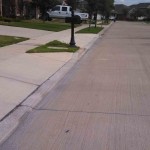
ps. Sorry for my blogging absence. Have been on vacation! (for some of it)
This blog-post is directed to employees….the drywall framers, hangers, tapers, fireproofers & plasteres who sand and finish mud & drywall.
Question: What type of respirator do you wear when you sand?
…answer? Anything I can find.
This question misleading… and is similar to the one where the attorney asks in divorce court, “Do you beat your wife only when you’re drunk, or all the time?”
But, reiterate.  Do you ever NOT wear a respirator when sanding? Answer: No. We always wear a respirator. It’s dusty.
So if I may ask a leading question (as a bad attorney): What type of respirator would you wear if you were worried about OVERexposure?
Answer: a tight fitting 1/2 face (or full face, for eye protection & fogging control) negative pressure respirator with HEPA cartridges.
I think I’ve made my point. Why would you choose a paper dust mask? The fit is mediocre, they are disposable, you cannot fit test them (very well). Who cares if it’s a N95 or P100. You can feel the dust escaping around your nose. Below are some “average” pictures of people sanding. What will you do?  more info here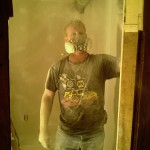
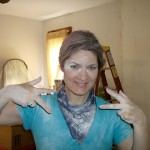
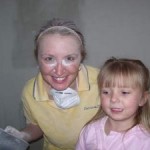
Tags: drywall, dust, fit test, framer, hanger, HEPA, IOM, mud, n95, p100, plaster, PPE, respirator, sand, sanding, tape, taper, tight fitting




